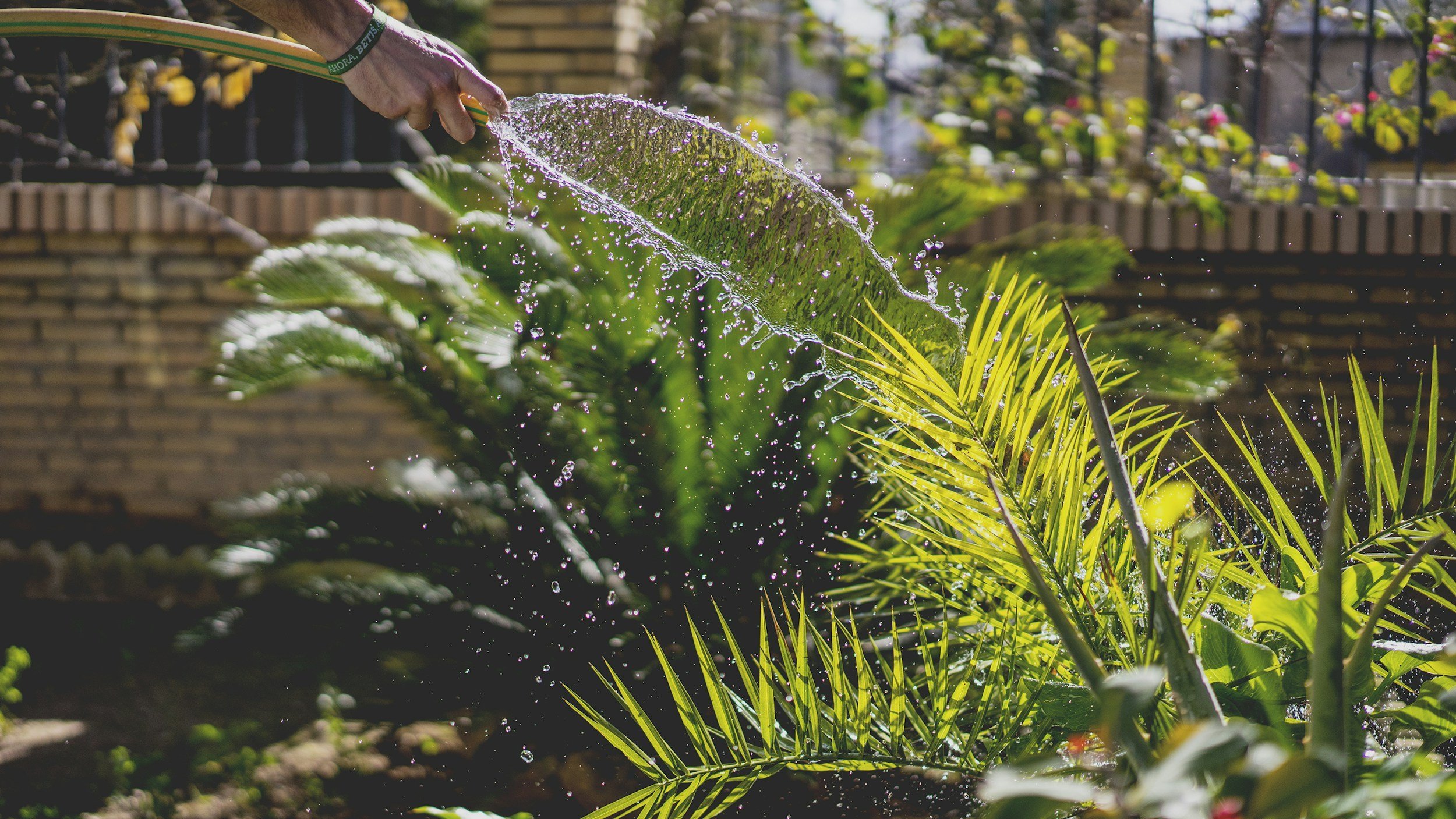
plant care guide
watering trees, shrubs + perennials
It’s important to keep plantings well-watered since their root systems have not fully developed. Make sure to check the soil right around the base of the plants-this soil may dry out faster than soil in between plants. Too much water can encourage disease and cause plant death, so it’s important to pay attention to the climate and the location of the plants to determine when and how much to water. Always check soil moisture before watering and keep your plantings well mulched to help retain soil moisture. Environmental factors that require more watering include: sun, wind, high temperature, season, lack of rain or plants located under an overhang. Remember that having one of these factors present is enough for a plant to dry out—so it could be cold, but if it’s windy, you still need to check for water. Water the soil surface directly around the plant base to ensure all of its roots receive water. Water over each area several times to make sure the soil and roots are thoroughly soaked. If possible, do not water the tops of the plants (the leaves, flowers and buds). This encourages diseases such as powdery mildew and can also ruin flower buds.
watering guidelines for new plantings spring through fall:
Week 1-2: every 1-2 days until root system is soaked.
Weeks 3-4: every 2-3 days until root system is soaked.
Weeks 4+: every 3-4 days until root system is soaked.
watering guidelines for new plantings fall through winter:
Week 1-2: every 2-3 days until root system is soaked.
Weeks 3-4: every 3-5 days until root system is soaked.
Weeks 4+: every 7 days until root system is soaked.
Ensure that root balls are soaked continuing up to the point of ground freeze which may be into December/January. As spring approaches, use the watering recommendations listed above.
perennial beds:
Established perennial beds (beds that have been installed for more than 2 years) should get an average of 1” of water a week. If there is no rain, this means running a sprinkler for at least one hour on the entire bed. Or you can hand-water thoroughly to soak the soil. To test if the soil is soaked, stick your finger down to the second knuckle. When using a sprinkler, remember that they do not always hit all plants in the garden. Other plants, tree trunks, other objects and the angle of the water spray can cause “shadows” to be cast over areas and these areas do not receive water. Be sure to look for these areas and find a way for them to get sufficient water.
trees + shrubs:
When watering trees and large shrubs, it is important to really soak the plant’s root system. For this reason, we recommend setting up a hose to slowly drip at the base of the plant for an hour or two. This means turning on the wand or hose at about quarter power. If possible, move the hose to a few different spots to get an even soaking. This ensures that the water will go deeply enough into the soil and the roots will be encouraged to grow deeper and wider. Weekly/Biweekly deep soaking is preferable over short daily watering.
watering for winter:
It’s a good idea to water all evergreen trees and shrubs that have been planted within the last 2- 3 years before winter begins (November is a good time). Evergreens continue to transpire water through their leaves in the winter, so watering before everything freezes is a good idea.
watering lawn sod + seed
The primary goal of watering new sod and seed is to maintain moist, but not soggy, soil. The way to achieve this is with an irrigation system or temporary sprinklers on a timer capable of watering multiple times per day. Established lawns prefer deep, infrequent watering and new areas need frequent shallow watering to maintain healthy moisture levels.
watering guidelines for new sod:
Day 1: Soak the sod and first 2” of soil.
Week 1-2: 2-3 times per day for approximately 5-10 minutes.
Weeks 3-4: 1-2 times per day for approximately 5-10 minutes.
Weeks 4+: Slowly adjust watering to match your normal lawn schedule of 1” per week.
watering guidelines for new seed:
Week 1-2: 2-3 times per day for approximately 5-10 minutes.
Weeks 3-4: 1-2 times per day for approximately 5-10 minutes.
Weeks 4+: Slowly adjust watering to match your normal lawn schedule of 1” per week.
If you have a large-seeded area, it will likely take 1 or 2 seasons of over-seeding and weed prevention in order to get the lawn fully established.
pruning
Except in emergency (breakage, etc.) do not prune the first season. This is because hormones manufactured in the leaf buds stimulate the roots to grow. If the buds are removed, root growth is affected. Trees and shrubs that flower early in spring on last year’s growth should be pruned immediately after flowering. Examples: lilac, forsythia, azalea, bridal veil spirea, etc.
Trees and shrubs that flower from early summer to fall on current year’s growth should be pruned later fall into dormancy. Examples: Hydrangea, spirea, weigela, etc.
Tree pruning can be done mid- summer through dormancy depending on variety.
Pruning can spread fungal diseases. For best practice, prune only when plants are dry and sanitize the tool between cuts.
weeding
Most new planting beds can be susceptible to weed infestation. It is important to keep the mulch thick enough (2-3”) so that light does not strike the soil surface which can reduce the opportunity for weed seed germination while encouraging moisture retention.
Do not over mulch or cover the plant’s root flare with mulch. Avoid mounding mulch around the base your plants which promotes stem rot.
We recommend mulching your planting beds yearly with a natural hardwood bark mulch and maintaining your gardens to help the success of establishing your new plantings

